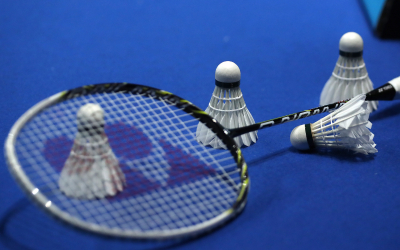
Badminton England has released its latest findings today as it continues to build back participation in the game across all levels and celebrate those that are back on court.
The pandemic impacted playing levels hugely in every sport with badminton being no different. Before the pandemic there were over a million players every month enjoying the physical, mental, and social benefits of the game; by April 2020 that figure was zero.
Over the course of the next 18 months, the sport navigated the various regulations and constraints on gathering sizes, social distancing and travel restrictions. Our focus as the National Governing Body was to protect our sport, prepare everyone for a safe and speedy return to play and finally to get everyone back on court.
Multiple lockdowns and restrictions have meant many challenges to that ambition to get everyone in the country back on court. Booking courts, making club sessions financially viable, getting work for coaches, running leagues and hosting tournaments – all provided their different challenges. Consequently, these different elements have returned at varying levels across the country.
From our research we can confidently say that well over 90% of activity has been able to return successfully, although there are significant variations in regions, ages and types of play. While we celebrate that return, we are aware of the remaining and ongoing challenges and continue to support the badminton community as we strive to re-establish pre-pandemic levels of participation.
Clubs: Our contact with clubs has shown us that over 90% of clubs are back up and running. As the fabric of our sport this is critical, but also shows us that almost 1 in 10 have not managed to restart. Smaller clubs have been more impacted than larger clubs, mainly by the rising costs that all clubs are facing.
Casual play: Data on ‘pay and play’ usage again shows over 90% return compared to our baseline prior to the pandemic. The return of co-ordinated activity however via No Strings sessions, our ‘turn up and play’ sessions that require no regular commitment, has so far seen only around two-thirds of attendees return, partly due to fewer organisers running these sessions.
Competition: Restrictions on gathering sizes, tiering, restrictions to travel and reduced availability of venues, all had a significant impact on the return of both league and tournament competition. As of December, just over three-quarters of leagues had restarted, and we held only 86 tournaments in 2021 compared to over 200 in 2019. Despite everyone’s efforts to fill some of the gaps, there is still a lot more to be done. The positive news, is that where we can run competitions, we are seeing these oversubscribed in some areas, showing that the appetite to compete is very much still there.
Coaches: While it is more difficult for us to track coached activity, feedback is showing that both junior and adult sessions are still in strong demand, though school sessions are still varied with no consistent pattern across the country, often with schools still reluctant to allow coaches back in to coach. Increased court hire costs are recognised as an issue for coaches as well as clubs.
Court availability: During 2020, the ability to book courts was a significant impairment to play with many schools closed to community sport and many leisure centres repurposing halls due to social distancing requirements. Our latest data shows that around 93% of the bookable courts are now open for use. We know however that risks still exist and that some sites remain under threat of closure, while others, though open, have reduced opening hours.
Costs: Although we have seen a rise in court availability, we are also seeing a significant rise in court hire costs. One of the recurring themes that we are hearing from clubs, coaches and members is that the rising costs of court hire and other associated items is putting strain on the finances of clubs.
Age and gender: Our data shows us that the strongest return is in the 18-39 age group, but lowest in the under 17 age group. Across genders, we are not seeing major differences from pre-pandemic behaviours and encouragingly are seeing a better gender balance in the under-15 age group.
Regionally: When we look regionally, we are seeing the strongest recovery in the East, London and South East and West Midlands. We see the slowest recovery in the East Midlands, North West and South West. Our regional plans will ensure that we see a full return to play right across the country.
It has been very encouraging to see the badminton community back on court, despite all the challenges that they faced during 2020 and 2021. Activity that has failed to restart until now is continuing to return in the New Year, although some activity has been impacted by an increase in Covid case numbers over the recent months, showing how fragile that return is.
At Badminton England, we continue to:
- Provide ongoing support for return to play and ensuring future sustainability through club and coach webinar series and Let’s Talk Badminton sessions.
- Provide individualised support for member clubs with facility and membership challenges.
- Provide competitive opportunities for play when traditional events are
- Assist clubs with cost challenges through our discounted shuttle deal and discounted court fees.
- Promote the return of the game through our Big Hit participation events.
- Help clubs and coaches open and access new facilities.
- Support clubs and venues to restart No Strings sessions.
- Monitor developments so that we understand where we need to focus our time and efforts.
Any clubs requiring support to find new members, or encourage members back, should contact their local relationship manager via this contact form.
